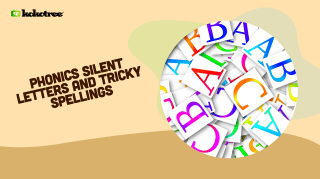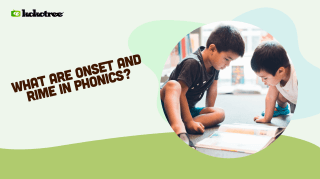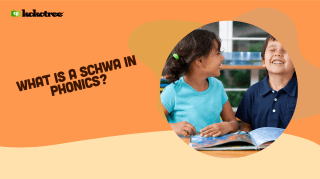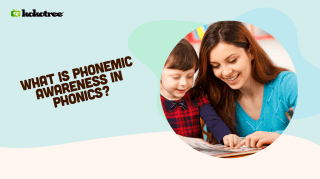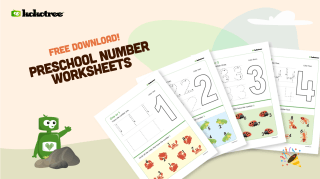
- Phonics
What is a Semi-Vowel in Phonics?
Written by: Kokotree
Last updated:

As a parent, helping your child learn the world of phonics can be both exciting and challenging. In this blog post, we’ll explore semi-vowels, an interesting category of sounds that have features of both consonants and vowels. By the end of this post, you’ll have a sound understanding of semi-vowels, their role in phonics, and why they are so important for your child’s language development. So, let’s dive into the remarkable realm of semi-vowels!
What is a Semi-Vowel in Phonics?
A semi-vowel, also known as a glide or a semi- consonant, is a speech sound that combines characteristics of both consonants and vowels. Examples of semi-vowels are the ‘w’ in “water” and ‘y’ in “yes.” Although they function as consonants when forming words, they are produced with a more open vocal tract, which is similar to how vowels are articulated. Semi-vowels play a crucial role in the phonics system and contribute to the richness and variety of the English language.

Characteristics of Semi-Vowels
Semi-vowels have unique features that set them apart from other speech sounds. Let’s dive into what makes semi-vowels so fascinating!
The Position of Articulation
In phonics, the position of your tongue and mouth while pronouncing a sound is crucial. For semi-vowels like ‘w’ and ‘y,’ the tongue and mouth assume positions that are midway between consonants and vowels, resulting in a more open vocal tract.
Syllable Structure
Unlike pure vowels that usually form the nucleus or central part of a syllable, semi-vowels typically appear at the beginning or end of a syllable. For example, ‘w’ comes at the beginning of the syllable in “wet” and ‘y’ is found at the end of the syllable in “may.”
Why Semi-Vowels are Important in Phonics
Understanding and mastering the concept of semi-vowels can significantly impact your child’s progress in phonics. Here’s why:
Boosting Reading Skills
Recognizing semi-vowels and their role in speech helps children improve their decoding and reading skills. As your child practices pronouncing semi-vowels, they’ll become more fluent readers and will be better equipped to tackle nuanced and complex written material.
Enhancing Language Development
Introducing semi-vowels to your child at an early age fosters language development by exposing them to the richness of phonetic sounds that exist in English. This understanding can be instrumental in boosting their speaking and listening abilities.
Integrating Semi-Vowels into Learning
Now that we know the importance of semi-vowels, let’s explore some practical ways to integrate them into your child’s learning process.
Phonics Games and Activities
Make learning semi-vowels fun by engaging your child in educational games and activities. You can create customized flashcards or word puzzles that incorporate semi-vowels, helping your child recognize and practice these unique speech sounds. Challenge your child to generate new words using semi-vowels, sparking their creativity and reinforcing their knowledge of phonics.
Learning App for Kids
Overwhelmed by the thought of teachingphonics at home? Look no further than a learning app for kids that focuses on phonics. By choosing an app with interactive, age-appropriate activities, you can give your child access to engaging content specially designed to teach semi-vowels and other speech sounds. This not only enhances their understanding of phonics but also allows the learning process to be enjoyable and fun!
Read-Aloud Sessions
Regular read-aloud sessions with your child provide ample opportunities for them to hear and practice semi-vowels in context. As you read, encourage your child to imitate your pronunciation and to identify semi-vowels within the words. This reinforcement offers a real-life application that will solidify their newfound semi-vowel knowledge and support their overall language development.
Additional Tips for Teaching Semi-Vowels
As you embark on this phonics journey with your child, here are some additional tips and strategies to help them master semi-vowels:
Consistency and Patience
When teaching phonics to your child, consistency is key. Dedicate sufficient time to practice semi-vowels regularly with your child, even if it’s just a few minutes a day. As with any new concept, learning semi-vowels can take time. Be patient, and provide encouragement and support throughout the process to keep your child engaged and motivated.
Contextualized Learning
Help your child understand semi-vowels better by incorporating examples from real-life situations or their favorite storybooks. Associating semi-vowels with familiar words and contexts will make them more accessible and easier for your child to remember.
Multisensory Approach
Children learn best when their lessons engage multiple senses. When teaching semi-vowels, consider employing tactics such as visual aids, word tracing, or verbal exercises. This multisensory approach can reinforce learning and make phonics instruction more effective.
Track Progress and Celebrate Success
Keep track of your child’s progress with semi-vowels and celebrate their achievements, no matter how small. Recognizing their growth can boost your child’s confidence and encourage them to take on new phonics challenges.
As your child becomes more familiar with semi-vowels, their reading and language skills will continue to develop. By practicing semi-vowels and incorporating them into their learning routine, you’re setting them up for success in phonics and beyond.
Frequently Asked Questions
In this FAQ section, we’ve compiled a list of common questions and answers related to semi-vowels in phonics. Browse through these to enhance your understanding and address any concerns you might have.
1. What is the difference between a vowel and a semi-vowel?
A vowel is a speech sound that’s produced with an open vocal tract, and it typically forms the nucleus of a syllable. A semi-vowel, on the other hand, has characteristics of both consonants and vowels but functions mainly as a consonant. It’s produced with a more open vocal tract than consonants but not as open as vowels.
2. Can you give more examples of semi-vowels?
Two prominent examples of semi-vowels in English are ‘w’ and ‘y.’ In words like “wet” and “yes,” these sounds function as consonants but have vowel-like articulation.
3. Are semi-vowels the same as diphthongs?
No, semi-vowels and diphthongs are not the same. A diphthong is a single vowel sound that consists of two separate vowel qualities, like the ‘ou’ in “loud.” Conversely, semi-vowels are speech sounds that blend characteristics of both consonants and vowels.
4. Why is it crucial to teach semi-vowels to young children?
Teaching semi-vowels to young children is important because it helps improve their decoding and reading skills, boosts language development, and enhances their speaking and listening abilities.
5. Which learning app for kids would you recommend for teaching phonics, including semi-vowels?
There are numerous learning apps available for teaching phonics to kids. Look for an app that focuses on phonics, offers a user-friendly interface, and provides engaging, age-appropriate activities. Some popular options include ABCmouse, Reading Eggs, and Teach Your Monster To Read.
6. How can I help my child practice semi-vowels at home?
You can help your child practice semi-vowels through phonics games and activities, read-aloud sessions, and incorporating a learning app for kids to create a fun and engaging learning environment.
7. When should I introduce semi-vowels to my child?
You can introduce semi-vowels to your child once they have a basic understanding of consonants and vowels. This will provide a solid foundation for learning more advanced concepts like semi-vowels.
8. How often should my child practice semi-vowels?
Consistency is essential, so try to incorporate semi-vowel practice into your child’s daily routine, even if it’s just for a few minutes. This regular practice will help reinforce their learning and improve their phonics skills.
9. What is the best way to teach semi-vowels to kids who are struggling with reading?
For kids who struggle with reading, consider using a multisensory approach that involves visual aids, word tracing, and verbal exercises. Additionally, make the learning process engaging and fun with games, puzzles, and interactive learning apps.
10. Are semi-vowels important for learning other languages apart from English?
Yes, semi-vowels are relevant in other languages as well. While the specific semi-vowel sounds may differ, understanding the concept of semi-vowels can help your child learn other languages with ease.
11. What is the primary function of semi-vowels in speech?
The primary function of semi-vowels is to serve as consonants in words. They help form the syllable structure and contribute to the richness and variety of the English language.
12. Can semi-vowels be found in the middle of a syllable?
While semi-vowels typically appear at the beginning or end of a syllable, there are instances where they can be found in the middle. However, these cases are less common.
13. Are semi-vowels more difficult for children to learn than other sounds?
Semi-vowels may initially be more challenging for children to learn because of their dual characteristics. Still, with consistent practice, engaging activities, and patience, children can master semi-vowels effectively.







